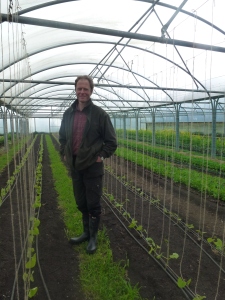After eight successful years in Jericho, this most British of restaurants was boarded up last summer and we bade it farewell. But the Big Bang is back. Oxford’s Sausage and Mash specialist has reappeared in a prestigious new venue in the Castle Quarter.
Owner Max Mason ran the Big Bang on a rolling contract at its former location on Walton Street. This meant that the threat of being turfed out was ever-present. Consequently Max was unable to invest in his business as he would have liked, although the reasonable rates did allow him to create a much loved brand in a city where leases are often expensive. That brand involved high quality British food at reasonable prices, a friendly atmosphere and a determination to source from local producers and support the local economy.
Max, 37, is a restaurateur with a keen eye for the ethics of the industry. The recent Big Bang launch party was packed with hundreds of happy guests not just because they have missed the bangers, but because Max’s passion for localism has obviously struck a chord with locals over the years.
The Iffley village resident told me more about his philosophy for the new venture: “I drew a 20 mile line around Oxford and all our food comes from within that radius; it’s not only more ethical, it tastes nicer. We use six local breweries, six Covered Market traders and seven local farmers; we make sure every plate of food has less than one hundred food miles,” he said.
Max is also keen to provide some form of counterbalance for the more globalised side of the food industry: “Usually suppliers have to accept reduced prices for their goods in return for becoming reliant upon one giant customer – be that supermarkets or chain restaurants. But I can help forty small producers stay in business. We hope the people of Oxfordshire will recognise this and eat with us instead of going to faceless chain restaurants,” he said.
The entrepreneur stressed that using quality, local ingredients does not need to incur extra cost on the customer. Due to careful management all dishes on the Big Bang menu are under the £10 mark.
As his sourcing of produce suggests, Max is passionate about his county. “For me, everything is Oxfordshire. Even my 45-year-old MG was built in Abingdon.”
The Big Bang uses John Lindsey Butchers, the Hook Norton Brewery and Vicars Game of Ashampstead to name just a few. The restaurant is also involved in some fascinating projects: They stock a coffee that is hand roasted in Witney – with wood from Blenheim palace. They also support a valuable social project by buying from Springhill Gardens Prison, which encourages inmates to rear pigs in the grounds before sending them off to be used as meat.
The Big Bang is now a more complete Great British food experience, the menu has expanded from what was a sausage and mash restaurant and little else in Jericho. Now there are Sunday Roasts, Full English Breakfasts and classics like Toad in the Hole and Fish and Chips. There is an exciting range of sausages including Wild Boar and Pigeon, Piri Piri, Stilton and Walnut and the historic Oxford sausage. To satiate a sweet tooth you can polish things off with a Sticky Toffee Pudding or a Crumble.
Max told me he had thought of the restaurant’s concept when it struck him that one often goes out for an Indian or a Chinese, but rarely for a ‘British’. The Big Bang helps us to realise that we can and should produce delicious food with our own national recipes and ingredients. It strikes me that we underestimate our own cuisine, in no small part because we rarely do our dishes justice. This is the result of Sausage and Mash, Shepherd’s Pie and many of our other favourites being consigned to the ready meal and freezer sections.
After a packed opening party which fed hundreds of guests with 8,000 cocktail sausages, the Big Bang is open for business. Open seven days a week, it is located at Number 42 in the Castle Quarter.
This article appeared in the Oxford Times magazine ‘Limited Edition’ in October, 2012.










